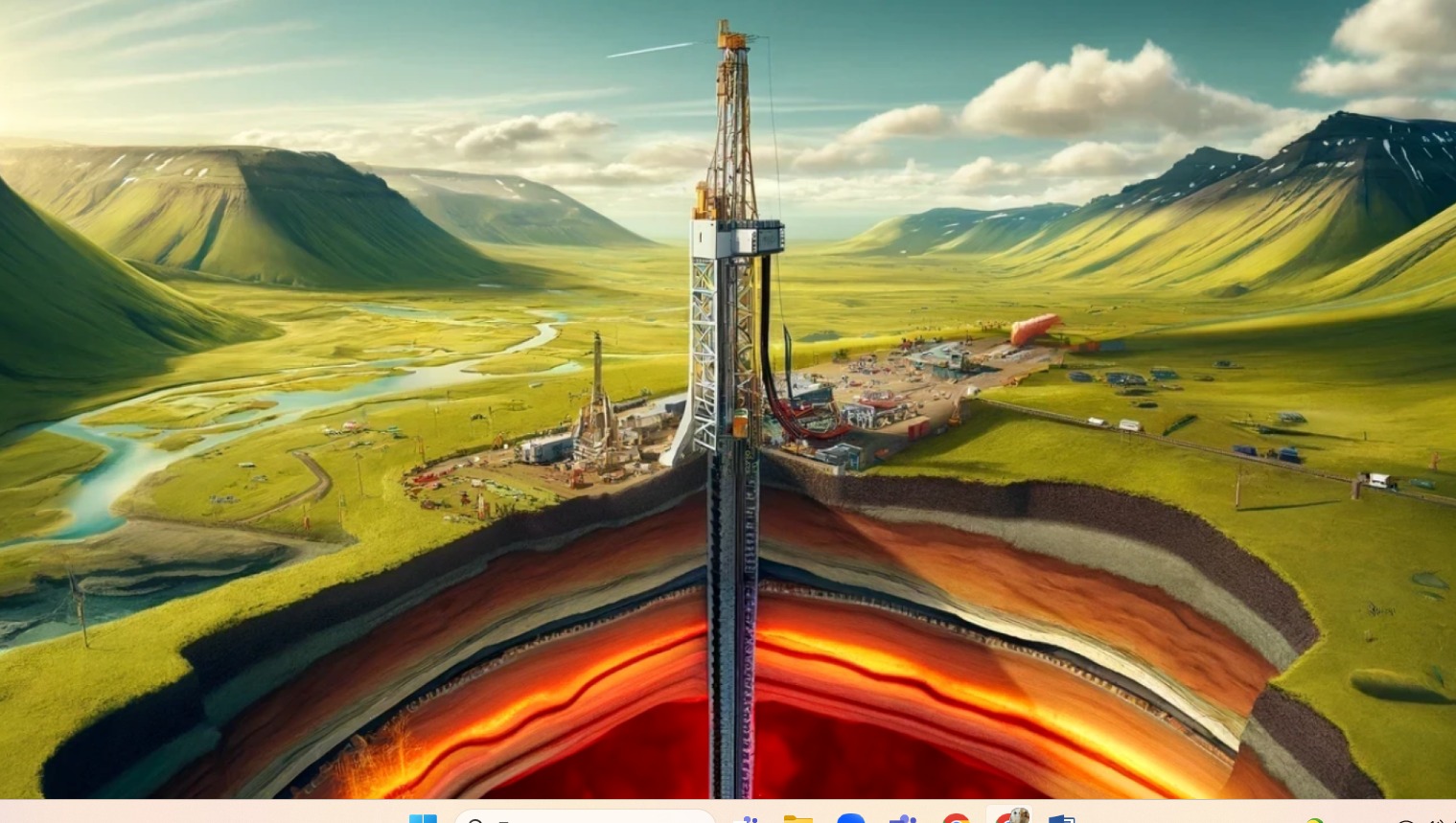World News10.05.2024
Drilling into magma: Risky plan takes geothermal to supercritical extremes

QAZAQ GREEN. The Krafla Magma Testbed (KMT) "has the potential to be for geoscientists what the Large Hadron Collider has been for particle physicists." So say researchers working on the project to drill straight into a magma chamber to explore massive geothermal power, New Atlas reports.
In 2009, researchers in Iceland drilled straight into the ground atop a known volcano. The original plan was to drill to a depth of 4.5 km (about 2.8 miles) to just above a known magma chamber. However, as you might imagine when it comes to messing with magma, things didn't go entirely to plan. At a depth of just 2 km (about 1.2 miles), the equipment penetrated an unknown upper part of the chamber where the scalding hot magma plugged up the hole, damaged the drill, and released a stream of noxious gas into the air.
A similar project was undertaken in 2014 with the same results. The drill hit an unexpected magma chamber and the equipment was destroyed by acidic gasses.
Not a people who are easily intimidated, the Icelanders took these two projects as a good sign. That's because they found magma much closer to the surface than anticipated, which means it can be more easily studied and, potentially, have its heat harnessed for massively more efficient geothermal power plants.
So they have decided to continue to poke their drills into more magma chambers as part of the KMT, which is to be the world's first magma observatory. Supported by over 40 research institutes and companies from 11 different countries, the goal of the project is threefold. First it will study magma itself and the way in which it interacts with the surrounding rock and transfers its heat out of the Earth's crust. Second, it will allow the direct observation of a volcanic system which, the team hopes, will lead to better ways to monitor, predict, and alert people to new eruptions.
Finally, and perhaps most dramatically, the KMT will explore using the tremendous heat energy contained in magma to dramatically improve the production of geothermal energy. Because the project will be deployed near the existing geothermal Krafla Power Station, there will be plenty of opportunity to experiment with actual power production.
"KMT will be the first international infrastructure, a field observatory, built to directly study magma and its coupling to the hydrothermal system above it," said the project team in the comments on the project's original profile video below. "This is analogous to a particle accelerator for physics or telescope array for astronomy but is focused on understanding processes occurring under the most extreme conditions in Earth’s crust."
The reason why magma is such an appealing add-on to geothermal energy production is that it has the thermal power to heat the water that turns the turbines into a supercritical state. This type of water forms when it is heated above 373 °C (about 703 °F) under 220 bars of pressure and it turns into a state of matter that is neither gas nor liquid. In this condition, the water can hold up to 10 times more energy than normal water or steam. Because of this, supercritical water is a kind of Holy Grail for geothermal energy advancement. Its use could dramatically improve the efficiency of the energy production process, making it an even more viable form of clean, available power, especially when coupled with other advances in the geothermal field.
Two-phased deployment
While originally slated to deploy this year, in a recent interview with Think Geoenergy, KMT's Björn Þór Guðmundsson said that the start of the project will take place in two phases: one in 2026 and the other in 2028.
The first well to be drilled will be the volcanic research well, and the second will be used for energy research.
"What is different about KMT is that we aim to recover a core from the base of the hydrothermal system to magma and monitor temperature through that interval in parallel," Guðmundsson told Think Geoenergy. "This will be the first time scientists will actually get samples of this. Our aim is to place temperature and pressure sensors into the magma for direct measurements on magma behavior. We are collaborating with the sensor community to develop new temperature sensor and temperature-resilient technologies to monitor pressure directly in the magma."
KMT also says that all of the equipment used this time around will be able to handle the harsh conditions that were unleashed during the previous drilling projects. And, of course the fact that the previous two efforts didn't trigger an accidental volcano leads the team to feel confident that the future projects will be relatively safe efforts.
IRENA accepting renewable energy project proposals in Central Asia until August 15
Astana to host Electronica Expo Kazakhstan Electronics Exhibition
WB gives rundown of Azerbaijan's green energy grid volume prospects
US solar sets new records as renewables nearly match natural gas – EIA
‘Wings’ on poles: Bill Gates-backed breakthrough wind turbine facility breaks ground
Perovskite tandem solar cell achieves new efficiency record
Kazakhstan and China endorse draft SCO joint statement on sustainable energy development
Innovative research on organic solar cells for space applications
Kazakhstan and Uzbekistan drive green energy progress in Central Asia
KazMunayGas launches pilot green hydrogen project in Atyrau
How private homeowners in Kazakhstan can make money from solar panels
14 countries are investing in Kazakhstan's renewable energy sector through auctions
How green hydrogen could transform Kazakhstan’s energy sector
IKEA offers ready-to-use solar power systems for balconies
Adani commissions India’s first off-grid green hydrogen pilot plant
Tajikistan unveils green energy roadmap at international conference in Dushanbe
Hydropower projects selected through KOREM Auction in Kazakhstan
EU reaches political deal to simplify CBAM
New research could unlock the potential of bladeless wind turbines
Uzbekistan to launch 16 renewable energy facilities by the end of 2025











